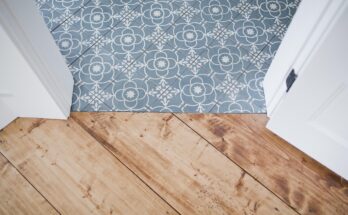ZonaJakarta – Carpet has a way of making a room feel cozy, quiet, and warm. It softens footsteps, absorbs sound, and instantly brings a sense of comfort to bedrooms, living rooms, and family spaces. But with that comfort comes a bit of responsibility—because unlike hard surfaces, carpet holds onto everything: dust, dirt, spills, smells, and allergens.
Still, with the right approach, keeping your carpet looking and feeling great isn’t all that complicated. It’s less about deep scrubbing every week and more about staying consistent with a few smart habits.
Here’s a complete and practical guide to maintaining carpet flooring—no fluff, just real steps to keep it in top shape.
Regular Vacuuming Makes All the Difference
Vacuuming is the most important and most underrated part of carpet maintenance. It might not be glamorous, but it’s the front line of defense against everything that settles into those fibers—dust, pet hair, crumbs, pollen, and all the little bits of dirt tracked in from outside.
If you wait until the carpet looks dirty, it’s already overdue. By then, debris has likely worked its way deep into the pile where it’s harder to remove. Vacuuming high-traffic areas (like hallways and living rooms) two to three times a week and less-used spaces once a week helps prevent that buildup.
Use a vacuum with strong suction and a rotating brush or beater bar. If you have thick or high-pile carpet, adjust the height setting so the vacuum glides over the surface without getting stuck. And don’t forget to go slowly—rushing through the job can leave dirt behind.
Treat Spills Immediately—Don’t Let Them Set
Spills are inevitable. A knocked-over glass of juice, a bit of sauce that didn’t stay on the plate, or a muddy paw print—they all happen. The key is acting fast.
The longer a spill sits, the more it seeps in and the harder it is to remove. Start by blotting—never rubbing—with a clean cloth or paper towel. Press gently to absorb as much liquid as possible. Then use a mild carpet cleaner or a mixture of warm water and a few drops of dish soap to dab at the stain.
Always test any cleaner on a hidden spot first to make sure it doesn’t bleach or damage the fibers. And avoid using too much water. Soaking the carpet can cause mold or mildew in the padding underneath.
For stubborn stains like wine, coffee, or ink, there are targeted carpet stain removers on the market. If something refuses to come out—or if the spot keeps reappearing—professional cleaning might be your best bet.
Rotate Furniture and Rugs to Prevent Wear Patterns
Carpet may bounce back underfoot, but over time, pressure and weight from furniture or constant footsteps can leave dents or wear marks—especially in spots where traffic is always the same.
To prevent this, rotate furniture and area rugs a few times a year. It helps the carpet wear more evenly and gives compressed spots time to recover. If your carpet has developed dents from heavy items, you can sometimes fluff it back up with a little steam or by gently teasing the fibers with a fork or a coin edge.
Adding carpet runners in hallways or near doorways is also a great way to take the brunt off high-traffic zones without hiding the look of the carpet entirely.
Deep Clean at Least Once a Year
Vacuuming handles the surface, but to really get the deep-seated dirt and oils out, your carpet needs a deep clean every so often. For most homes, once a year is enough. If you have pets, small children, or someone in the house with allergies, consider doing it every six months.
You can rent a carpet cleaner, hire a professional, or use a home carpet cleaning machine if you have one. The goal is to reach deep into the fibers, remove embedded dirt, and refresh the overall appearance and feel of the carpet.
If you’re using a rented or store-bought machine, follow the instructions carefully. Use the recommended cleaning solution, don’t oversaturate the carpet, and make sure to let it dry completely before walking on it. Damp carpet can attract more dirt and even cause mildew if left wet too long.
Protect Your Carpet from Daily Damage
Everyday wear is what really shortens the life of carpet—not just the occasional mess. A few simple habits go a long way in keeping things cleaner:
– Place doormats at every entrance and ask people to remove their shoes indoors. This cuts down significantly on tracked-in dirt.
– Keep food and drink out of carpeted areas if possible—especially dark-colored beverages like red wine or coffee.
– Use furniture coasters or pads to reduce pressure on the carpet from heavy items.
– Trim your pet’s nails regularly and keep them groomed to limit shedding and reduce the risk of snags or matting.
These small habits help keep the carpet from aging faster than it should.
Air It Out and Deodorize When Needed
Even if your carpet looks clean, it can hold onto odors—from pets, cooking, smoke, or just day-to-day life. If a room starts smelling a little musty, the carpet may be to blame.
Sprinkling baking soda on the carpet and letting it sit for 15–30 minutes before vacuuming can help absorb odors. You can also use carpet-safe deodorizers or a few drops of essential oil mixed with baking soda for a natural scent boost.
And don’t underestimate the power of fresh air. Opening windows regularly helps keep musty smells from lingering.
Final Thought: A Little Attention Goes a Long Way
Carpet brings warmth and comfort like no other flooring material—but it needs a bit of consistent care to stay looking and feeling great. The good news is that maintenance doesn’t have to be complicated.
Vacuum regularly, tackle stains quickly, deep clean when needed, and keep everyday dirt and damage in check. Treat it well, and your carpet will return the favor—staying soft underfoot, holding its color, and keeping your home cozy for years to come. (*)




